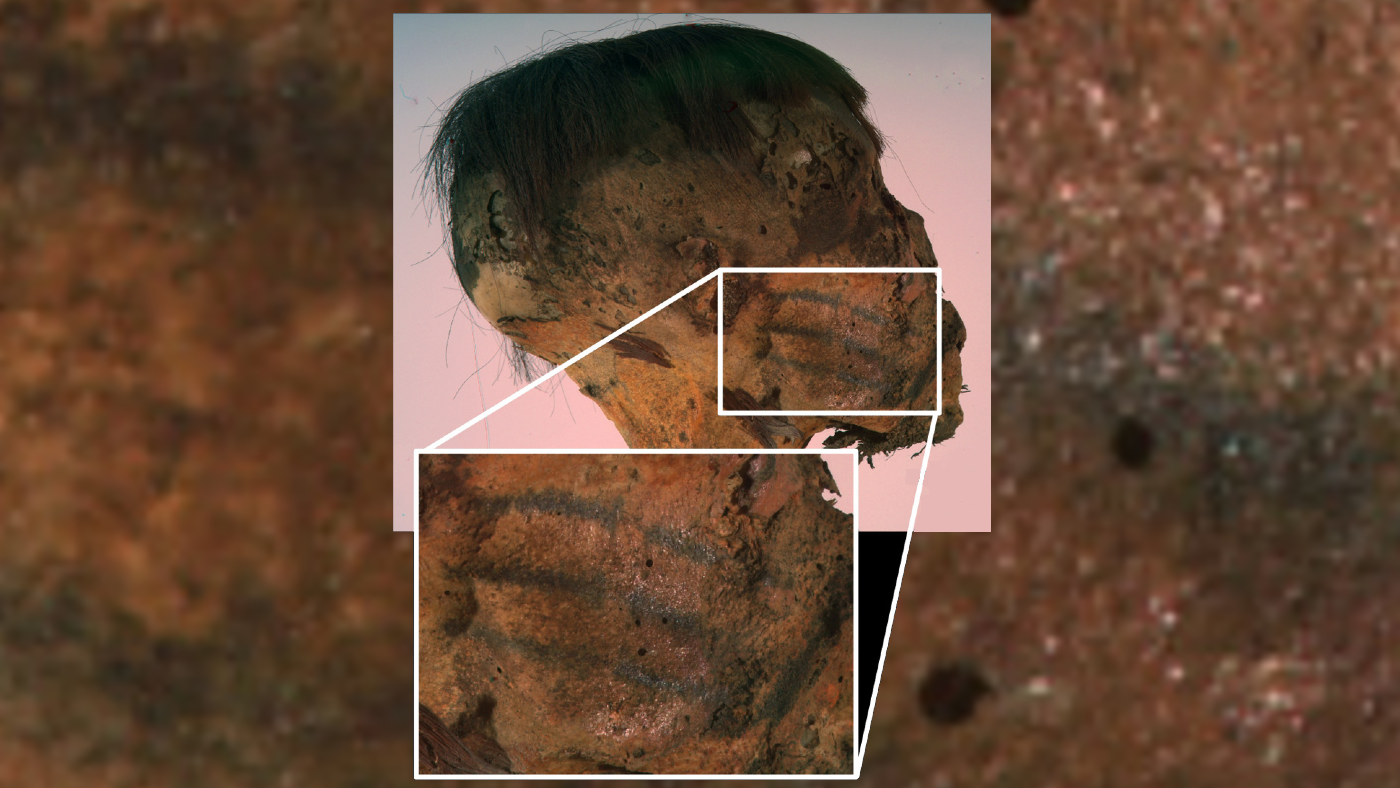Rare face tattoos on 800-year-old mystery mummy baffle archaeologists
Analysis of a mummy kept for a century at the University of Turin in Italy has revealed rare face tattoos made with a special black ink.

An 800-year-old mummy donated to a museum in Italy a century ago has revealed new clues about ancient face tattoos. But the mummy's origin remains shrouded in mystery.
Some time prior to 1930, the mummy of an adult female was donated to the Museum of Anthropology and Ethnography (MAET) at the University of Turin, with no records of its archaeological context. The mummy recently caught the attention of a team of researchers due to the surprising presence of tattoos on her face.
In a study published in the May-June issue of the Journal of Cultural Heritage, the international team of researchers detailed their analysis of the mummy and her tattoos, noting that they were extremely unusual both in their location and in the composition of the ink used to make them.
The mummy has straight black hair cropped short and is tightly flexed into a seated position, typical of mummy burials in the Andes. Researchers carbon-dated textile fragments stuck to the body and determined the woman died between A.D. 1215 and 1382.
"On the basis of current evidence — particularly preservation, body placement, associated materials and documents — a South American origin is strongly supported," study lead author Gianluigi Mangiapane, an anthropologist at the University of Turin, told Live Science in an email.
Related: Lasers reveal hidden patterns in tattoos of 1,200-year-old Peru mummies
But while looking closely at the mummy using infrared reflectography, a technique often used to "see through" paint layers of artwork to find older brush strokes, the research team noted a series of unusual tattoos: three lines on the mummy's right cheek, one line on the left cheek and an S-shape on the right wrist.
Get the world’s most fascinating discoveries delivered straight to your inbox.
"Skin marks on the face are rare among the groups of the ancient Andean region and even rarer on the cheeks," the researchers wrote in the study, and the S-shaped tattoo "is so far unique for the Andean region."
To identify the ink used to make the tattoos, the researchers used a suite of non-destructive techniques. Although they expected to find evidence of charcoal in the ink, they instead discovered that the unusual ink was made with magnetite, an iron oxide mineral, with traces of the mineral augite. In South America, augite and magnetite can be found together in southern Peru, suggesting a potential homeland for the mummified woman.
"There are a small number of ethnographic accounts from the Americas that describe the use of mineral or earth pigments such as hematite or magnetite for tattooing, and the new study fits quite nicely with those," Aaron Deter-Wolf, an archaeologist at the Tennessee Division of Archaeology who was not involved in the study, told Live Science by email.
But Deter-Wolf, who is an expert in ancient tattooing, is not convinced that the mystery mummy hails from the Andes.
"Stylistically, these particular face markings have far more in common with historic Arctic or Amazonian traditions than with Andean practices," Deter-Wolf said. "It would be fascinating to see what oxygen isotopes or other studies might be able to tell us about the origins of this individual."
At this stage, though, isotope analyses have not been carried out. "Since these types of analyses are invasive, we have currently decided to limit such procedures in order to preserve the integrity of the remains," Mangiapane said.
But the MAET that houses the mummy is interested in further investigation, Mangiapane said, and this may include future cultural comparisons to better understand the nature of the mysterious mummy's facial tattoos.
Mummy quiz: Can you unwrap these ancient Egyptian mysteries?

Kristina Killgrove is a staff writer at Live Science with a focus on archaeology and paleoanthropology news. Her articles have also appeared in venues such as Forbes, Smithsonian, and Mental Floss. Kristina holds a Ph.D. in biological anthropology and an M.A. in classical archaeology from the University of North Carolina, as well as a B.A. in Latin from the University of Virginia, and she was formerly a university professor and researcher. She has received awards from the Society for American Archaeology and the American Anthropological Association for her science writing.
You must confirm your public display name before commenting
Please logout and then login again, you will then be prompted to enter your display name.
